All products featured are independently chosen by us. However, SoundGuys may receive a commission on orders placed through its retail links. See our ethics statement.
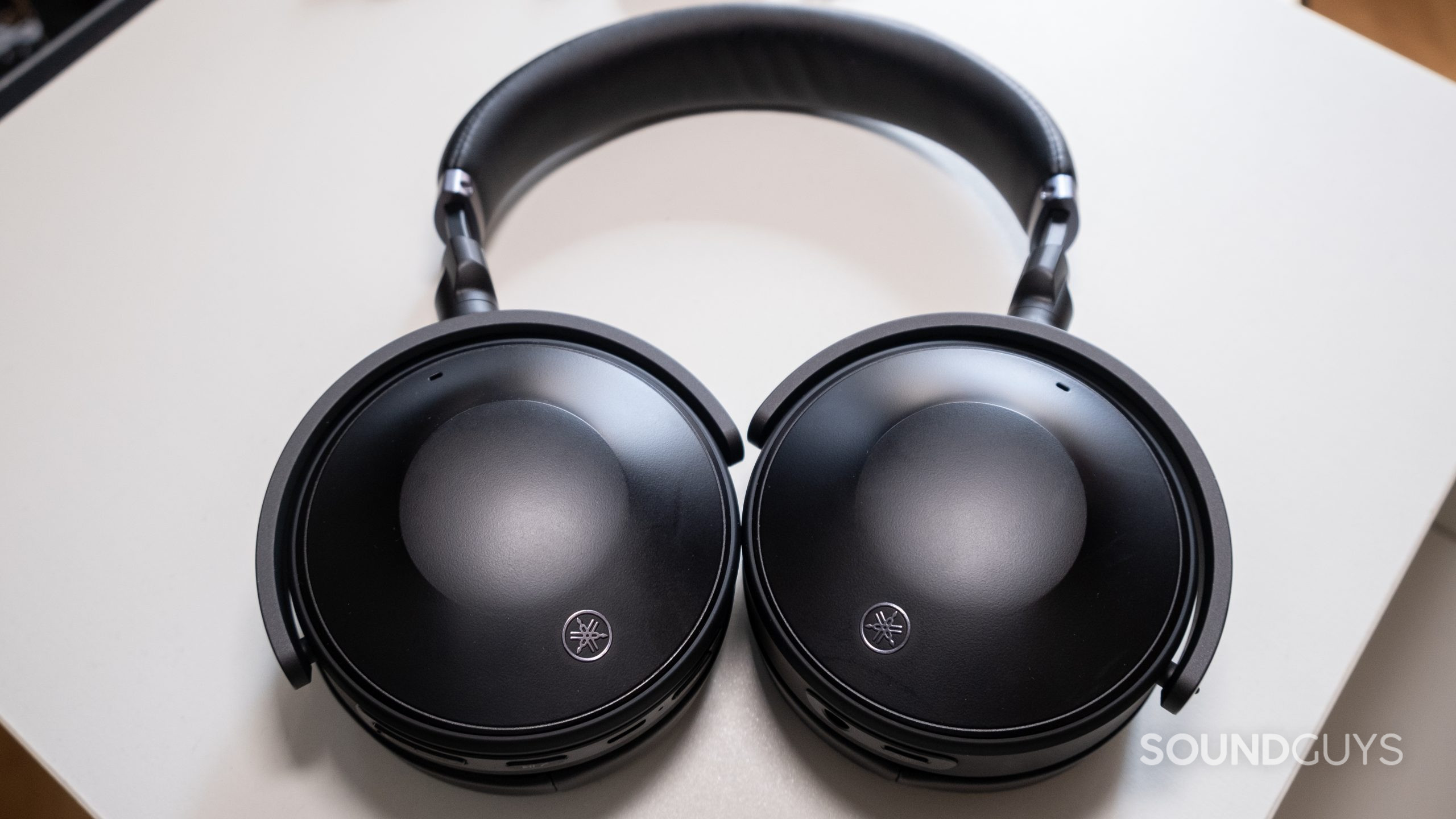
Yamaha YH-E700A review
Published onApril 8, 2022
Yamaha YH-E700A
Yamaha has roots in music stretching back to the nineteenth century. To say the manufacturer of headphones, synthesizers, home theatres, motorcycles, and more knows a thing or two about music (and noise—I’m looking at you, dirt bikes) would be a gross understatement. With opaque terminologies like “Listening Care” and “Listening Optimizer,” how does the active noise canceling (ANC), and audio of the Yamaha YH-E700A ultimately shake out?
- People who take flights will enjoy the reasonable clamping force and included flight adapter of the YH-E700A for long trips.
- Fans of bass will surprisingly like the boost to bass with noise canceling mode and Listening Care and Listening Optimizer.
What is it like to use the Yamaha YH-E700A?
At the risk of discrediting myself, the Yamaha YH-E700A box is a bit baffling to open, at least initially. However, having a magnetic side, rather than a more obvious lid is reflective of why I find this product so amusing—it does just about everything with an unorthodox approach.
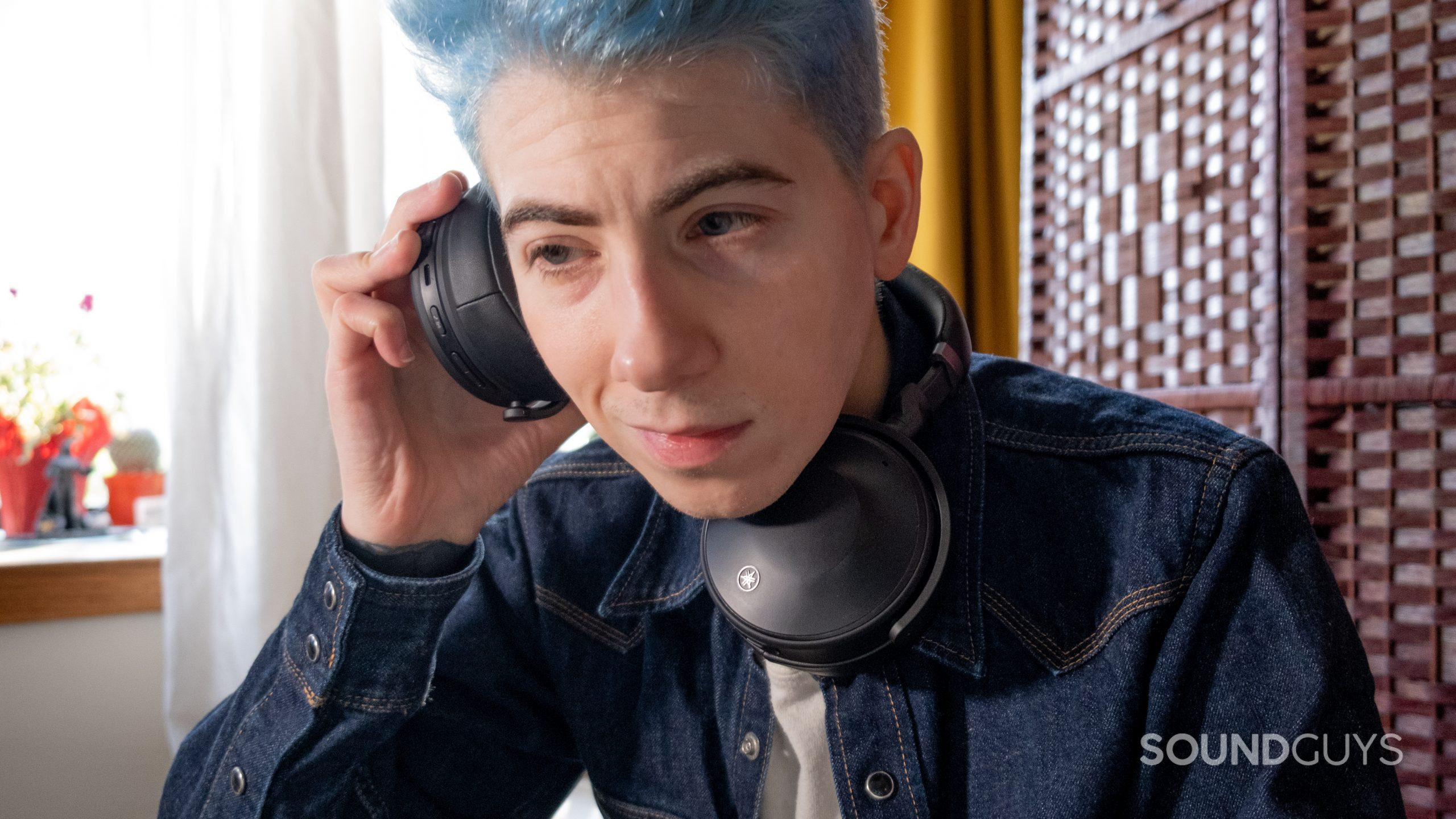
The Yamaha YH-E700A is made mainly of plastic, with vinyl padding and metal reinforcements in the headband. It’s highly flexible, in a way that’s clearly intentional, unlike the bendable Monolith by Monoprice M1070C. The ear cups swivel horizontally (from forward-facing to back) to lay flat, and articulate vertically. It also folds up like Sony and Bose’s headsets.
Start here: Ultimate headphone buying guide
The padding on the ears is quite large, and the space within which you fit your ears is about 58mm by 60mm. The grip is good enough for walking around, but it’s too loose for anything physically rigorous. Personally, I find it comfortable, though somewhat cramped for one of my ears. This medium-to-light grip makes sense for the flight Yamaha anticipates you’ll take the YH-E700A on, given its included airplane adapter.
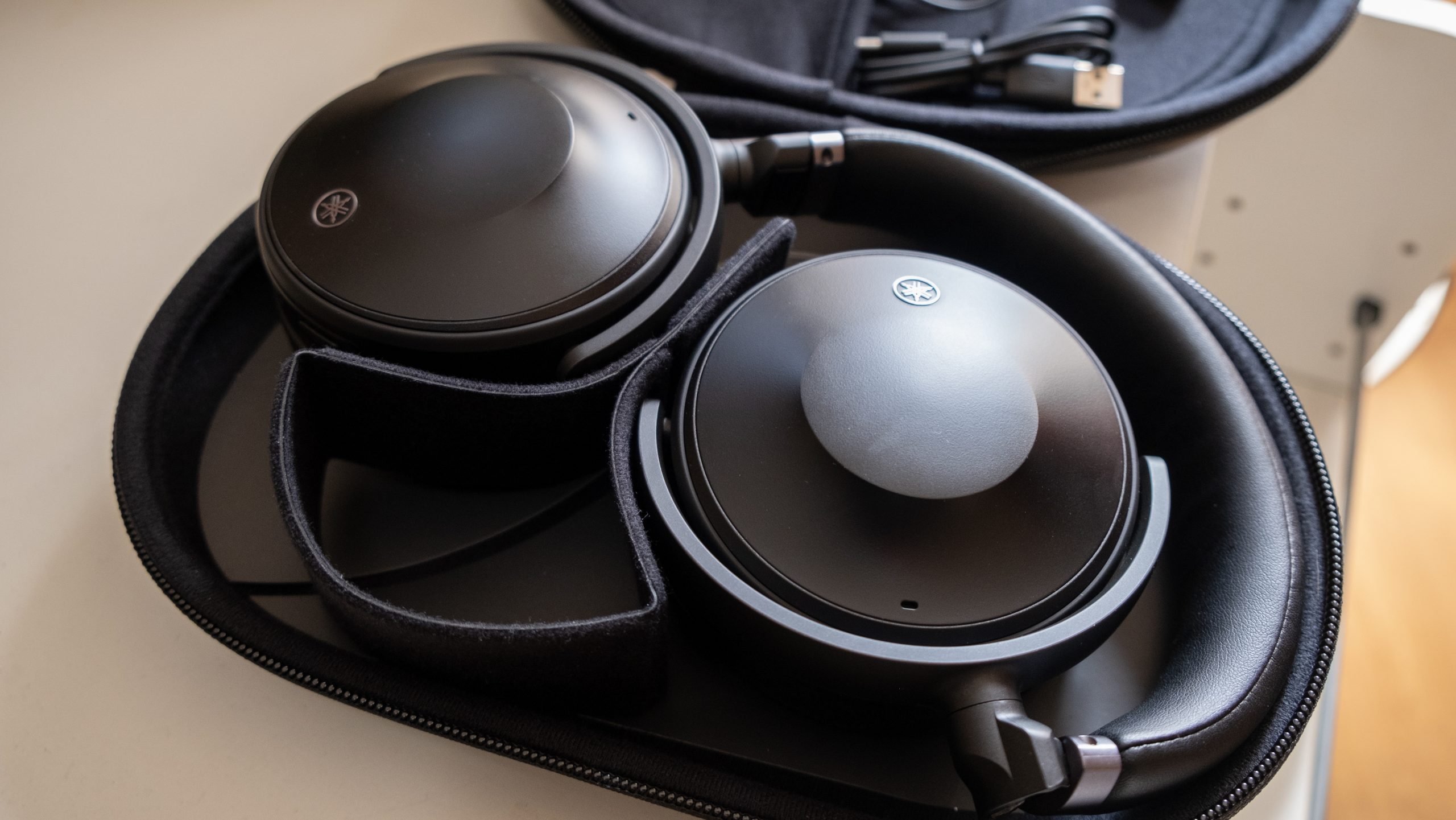
The case looks a bit like a kidney bean with an unusual placement—a half fold basically. Luckily, Yamaha includes a diagram affixed to the inside of the zip case, because it’s a little fiddly, even if it does make things more compact. It’s worth the fussing to save space in your backpack, and you’ll get used to the configuration.
Interestingly, the manual available through the app and via a QR code on the start-up sheet lacks some prudent user tips. It doesn’t even explain what the headphones’ different lights indicate. I recommend sticking to the paper copy which is much more informative.
How to control the Yamaha YH-E700A
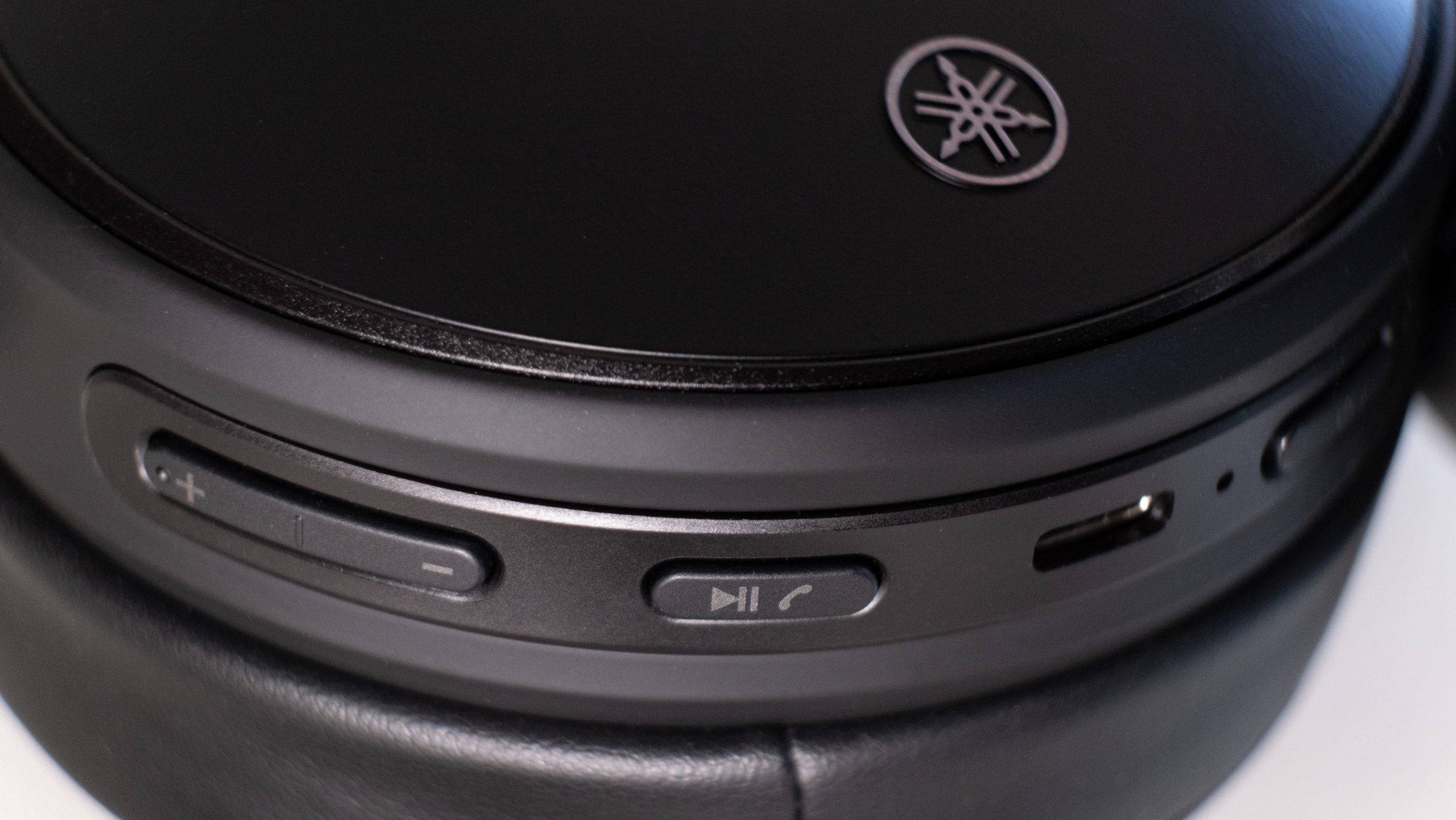
Besides a button on the left headphone to cycle through active noise canceling (ANC), Ambient Sound, and standard listening, all other buttons are on the right ear cup. Volume and track skipping share the same two buttons on a long plastic strip, while pause/play/answer call/end call/voice assistant are on another button. Finally, on the right ear cup towards the very front, you’ll find power and Bluetooth pairing shared with a single button.
All buttons work as intended, except quite often when one goes to Bluetooth pair, which requires holding the button down for about 5 seconds, the headset turns off instead. There’s a narrow difference in timing between Bluetooth pairing mode and power off, which is really annoying.
| PRESS | LONG PRESS | PRESS TWICE | |
|---|---|---|---|
+ BUTTON | PRESS Volume up | LONG PRESS Skip forward (2 seconds) | PRESS TWICE |
- BUTTON | PRESS Volume down | LONG PRESS Skip back (2 seconds) | PRESS TWICE |
PAUSE/PLAY BUTTON | PRESS Play / Pause Answer call / End call | LONG PRESS Ignore call | PRESS TWICE Voice assistant |
POWER/BLUETOOTH | PRESS Power on / off | LONG PRESS Bluetooth pairing (5 seconds) | PRESS TWICE |
ANC | PRESS ANC / Ambient/ Standard listening | LONG PRESS | PRESS TWICE |
It takes a little practice to memorize each button’s location. Yamaha could take a cue from the House of Marley Positive Vibration XL ANC’s oversized and rubberized buttons, which feel distinctly different for quick controls.
While you would think that so long as the YH-E700A is turned on you should be able to pair it, it tends to cooperate best if you enter pairing mode immediately when powering on the headset.
- To do this from powered off, press and hold the power/pairing button towards the front right ear cup to power on. A voice will announce “power on” and the LED will turn blue.
- Continue to hold the same button for 5 seconds and the LED will flash red and blue. Now it’s in pairing mode.
- Select the headphones on your device and the LED turns blue again to signal it’s connected.
- Be careful not to accidentally turn it off, because it’s easy to accidentally do that if you hold the power/pairing button too long. It can also power off if you initiate pairing mode after letting go of the power button when you turn it on.
Should you download the Headphone Controller app?
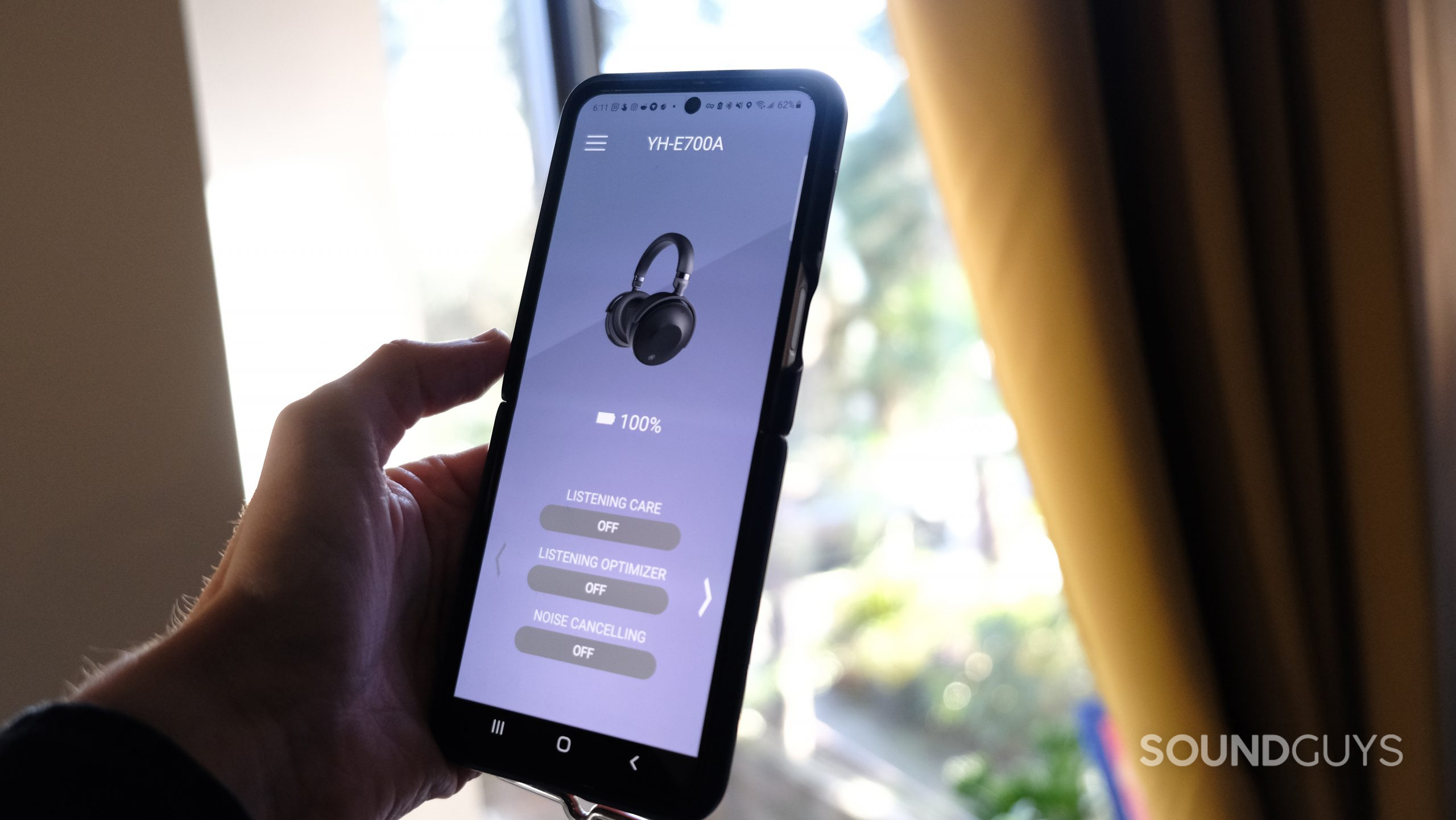
Yes, grab the Yamaha Headphone Controller app. Although it is limited in depth, you have to use it to access updates. In order to access it, you have to sign away some of your data. Once you’ve done so, the app works mainly on a single screen with buttons to select ANC, standard mode, or Ambient Mode. There’s no adjustability in ANC.
The bigger mystery only accessible in the app is “Listening Care” and “Listening Optimizer”—both of which are activated by default. Listening Care operates as a kind of AI adaptive four-band equalizer. Yamaha’s description seems to suggest it’s meant to avoid auditory masking so you can listen at safe volumes. In action, it reminds me of the loudness button on 1990s stereos. Usually, it just makes the bass and treble louder. I’d prefer a traditional equalizer.
Turning up the bass seems to be the main function of Listening Care and Listening Optimizer.
Listening Optimizer functions through a combination of hardware and software. Microphones in the ear cups measure your individual fit every 20 seconds and the software makes adjustments to the audio to “optimize” it.
For the most part, I don’t notice a major difference with it on or off, although I can manage to trick it to get an idea of what it does. Take off the headphones for over 20 seconds while playing a song and when replacing the headset the audio will sound significantly more bassy. It later readjusts. This makes sense because bass tends to be the first set of frequencies to not make it to your ears when you have a poor fit. So, if the headphones aren’t covering any ears, it boosts the bass even more. I leave the function off. Like most Adaptive Sound features it does not necessarily improve the musical experience.
What Bluetooth codecs does the Yamaha YH-E700A use?
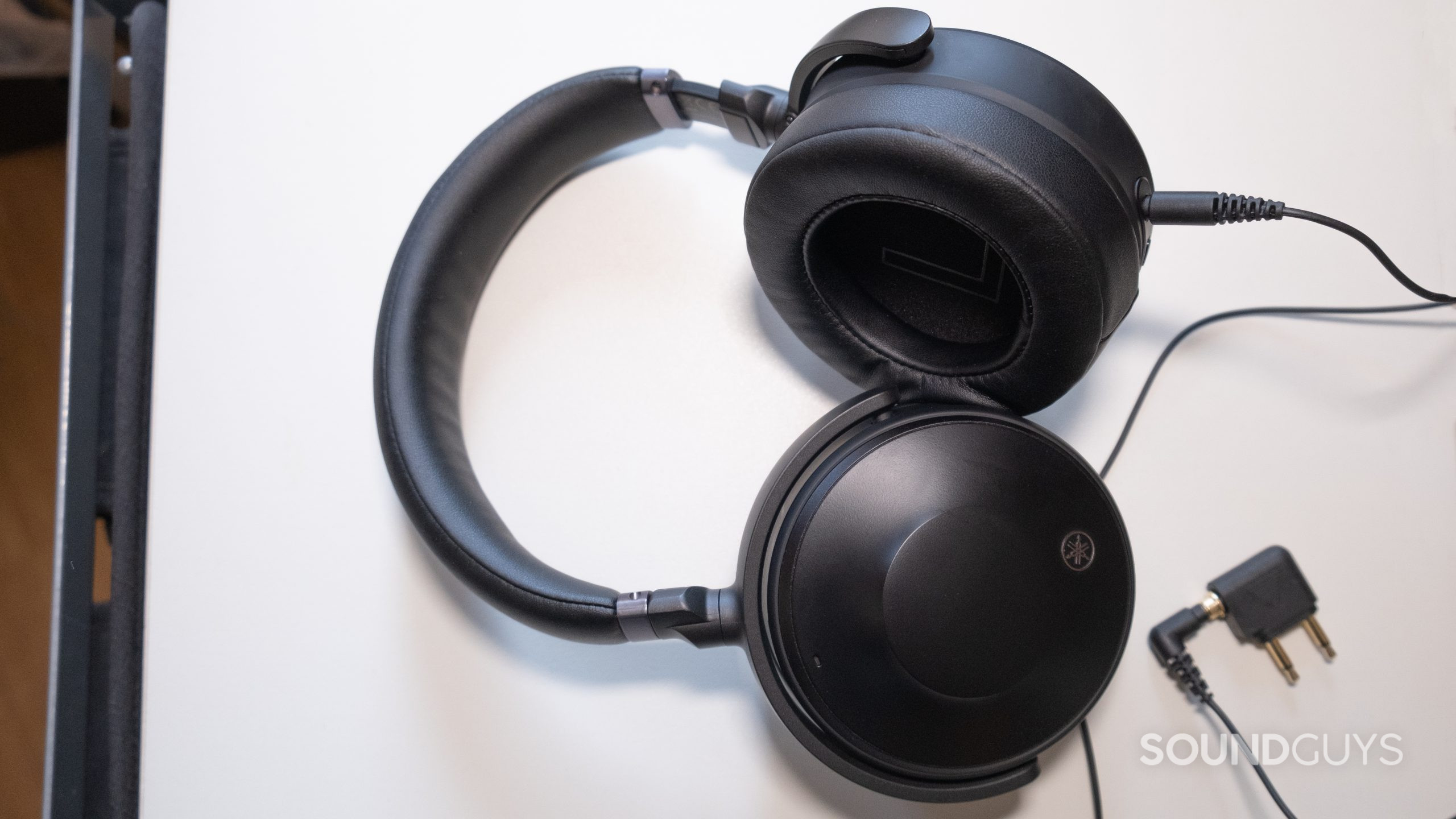
The YH-E700A has the usual pairing of SBC, AAC codecs, but the winner for low latency is the aptX Adaptive inclusion. This adapts the data transfer rate depending on the connection circumstances. It has a lower transfer rate than aptX and aptX HD, but it’s still pretty high, ranging from 279kbps to 420kbps. For Android users, this performs better than AAC or SBC. It’s great for video streaming to keep mouths in sync with voices. Apple users will still stick to AAC, as aptX Adaptive isn’t supported on iOS or macOS.
Related: Best aptX Bluetooth headphones
In use, there are no signal dropouts across a distance of 20 feet (6m) or so with walls. Of course, you can always plug in with the 3.5mm connector for the best quality audio.
How long does the battery last on the Yamaha YH-E700A?
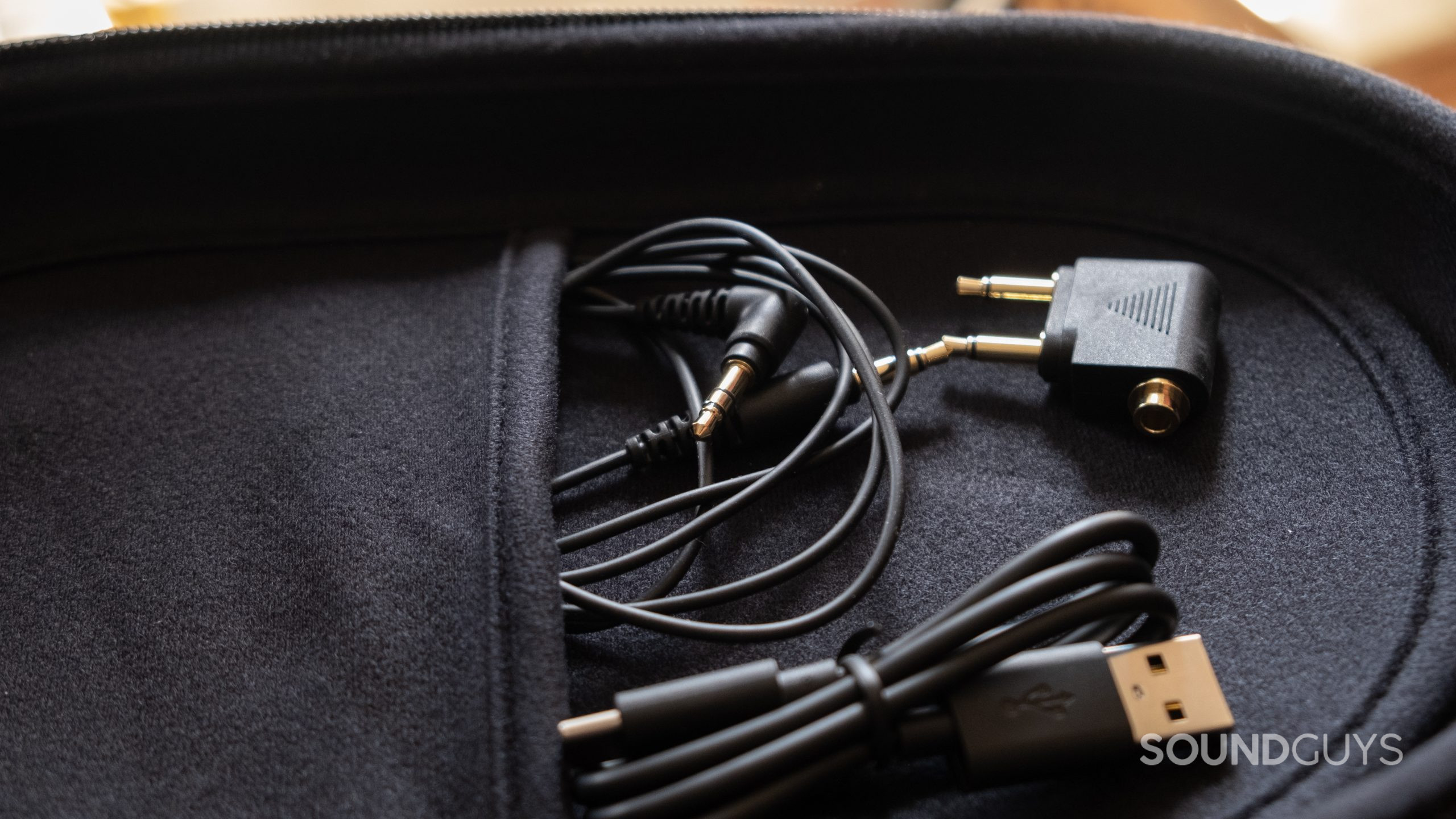
Yamaha claims the headset has up to 35 hours of battery life. With ANC on, we found the Yamaha YH-E700A lasts 23 hours, 35 minutes according to our standardized test—a long way short of Yamaha’s numbers.
Regardless, 23 hours, 35 minutes is enough to survive any listening session you have in mind. I manage a week before recharging, but that all depends on the volume of your listening sessions and duration. It takes three and a half hours to fully recharge the headset from zero juice via the included USB-C cable.
How well does the Yamaha YH-E700A block out noise?
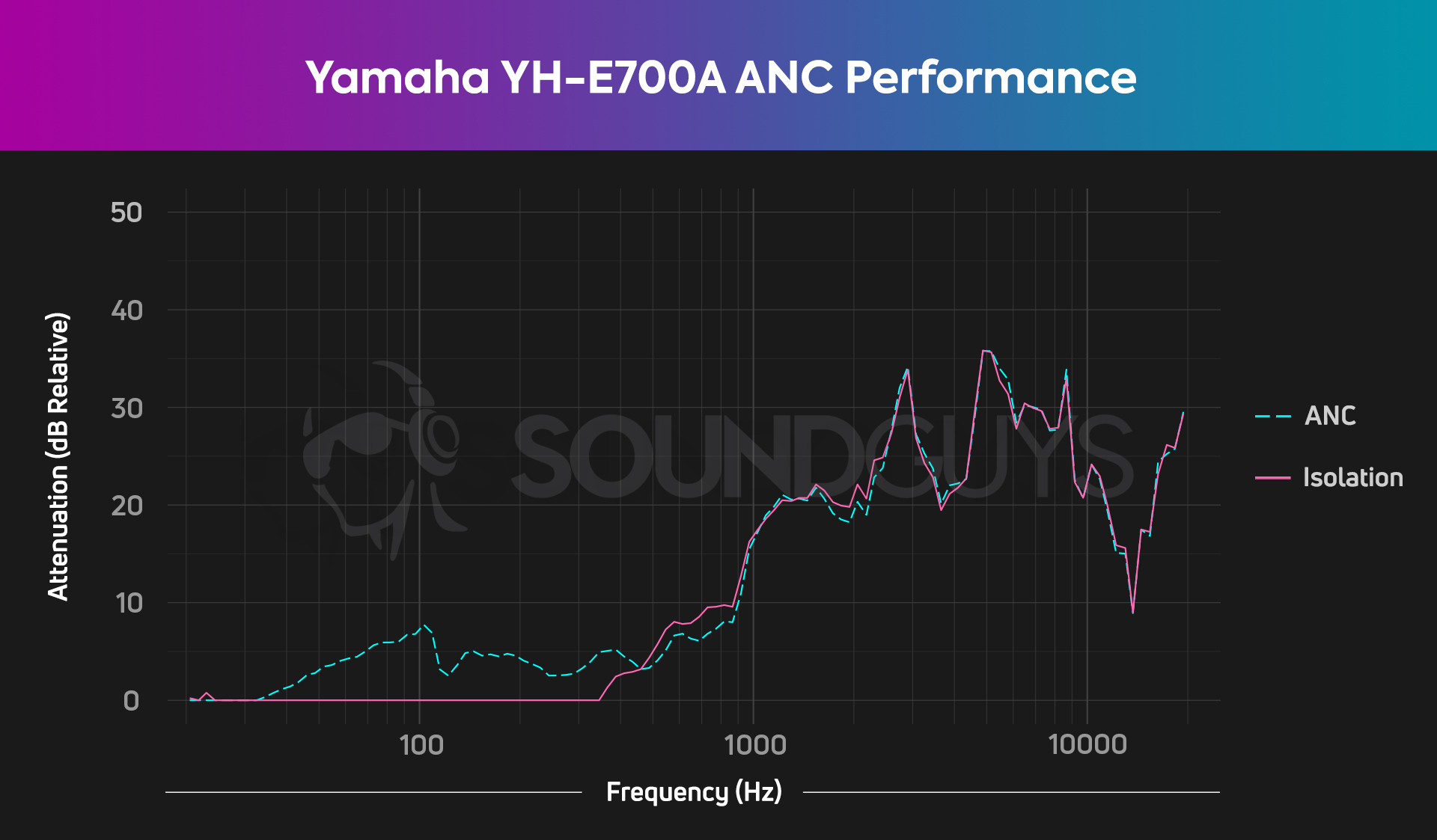
Honestly, passive isolation performs the vast majority of the Yamaha YH-E700A noise canceling properties. The headphones’ ANC fails to attenuate even 10dB of low-end noise. Seeing as the majority of ANC effectiveness is supposed to affect those low-frequency sounds, this is pretty abysmal. In testing, the isolating properties do enough blocking of external sounds to satisfactorily attenuate voices and incidental noises.
Related: The best noise canceling headphones
More on this later, but when you switch on the ANC, the headset’s frequency response changes too. Bizarrely, it cranks up the sub-bass and turns down the volume from 100Hz and 400Hz. It almost makes me wonder if this is a ploy to make you think it cancels noise better than it actually does, by upping the sub-bass to mask external low sounds.
How does the Yamaha YH-E700A sound?
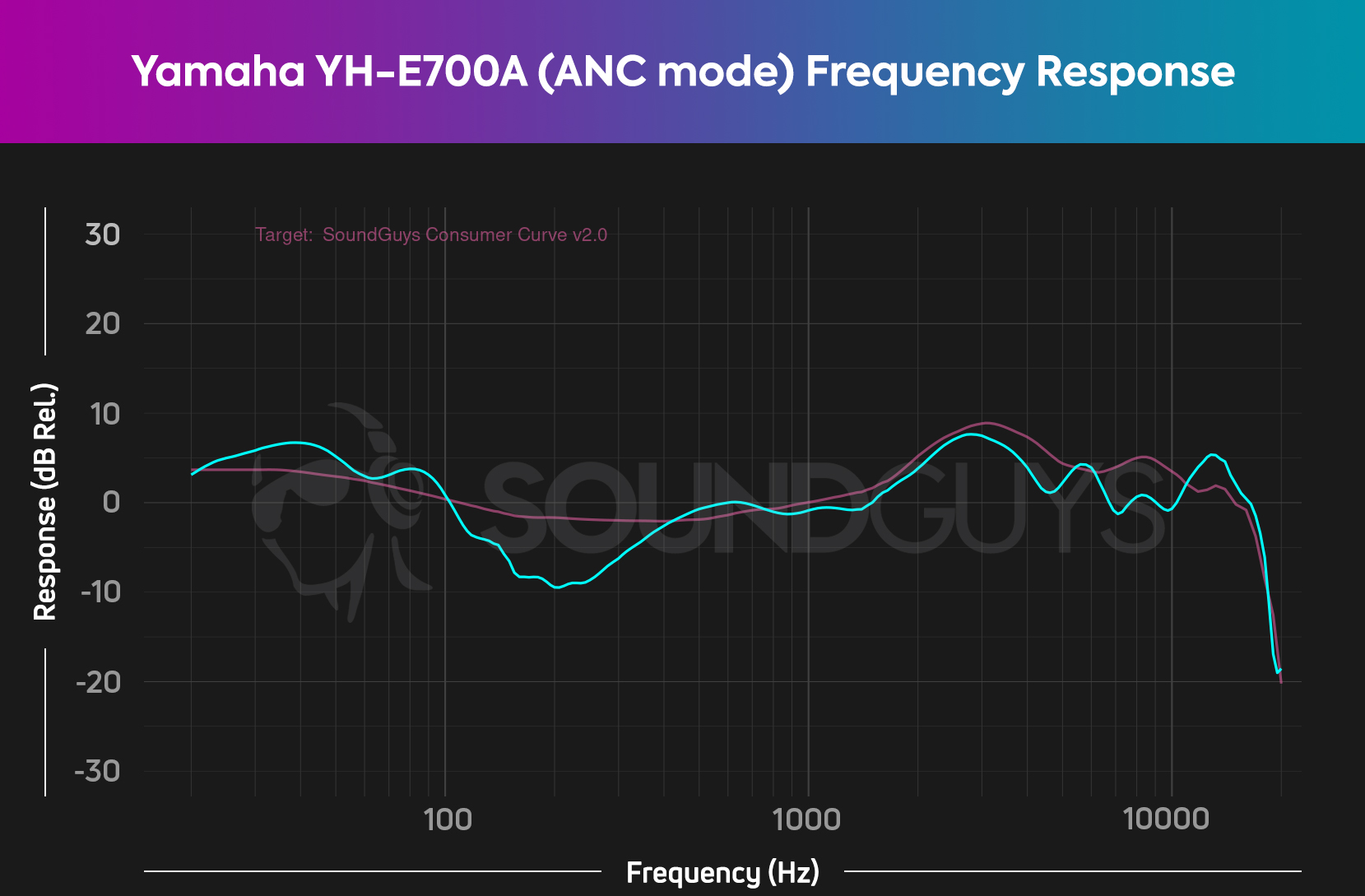
The Yamaha YH-E700A basically has two frequency responses determining its sound. With ANC on you’ll get the response shown above, with it off you’ll get the response shown below. The biggest changes occur below 1kHz, but both responses are a little off when compared to our ideal.
See also: How to read charts
We also note that switching on ANC introduces what looks like ringing in the frequency domain on the right channel between 100Hz and 800Hz, as well as higher distortion on the right channel. Yamaha assured us that our sample is working correctly.
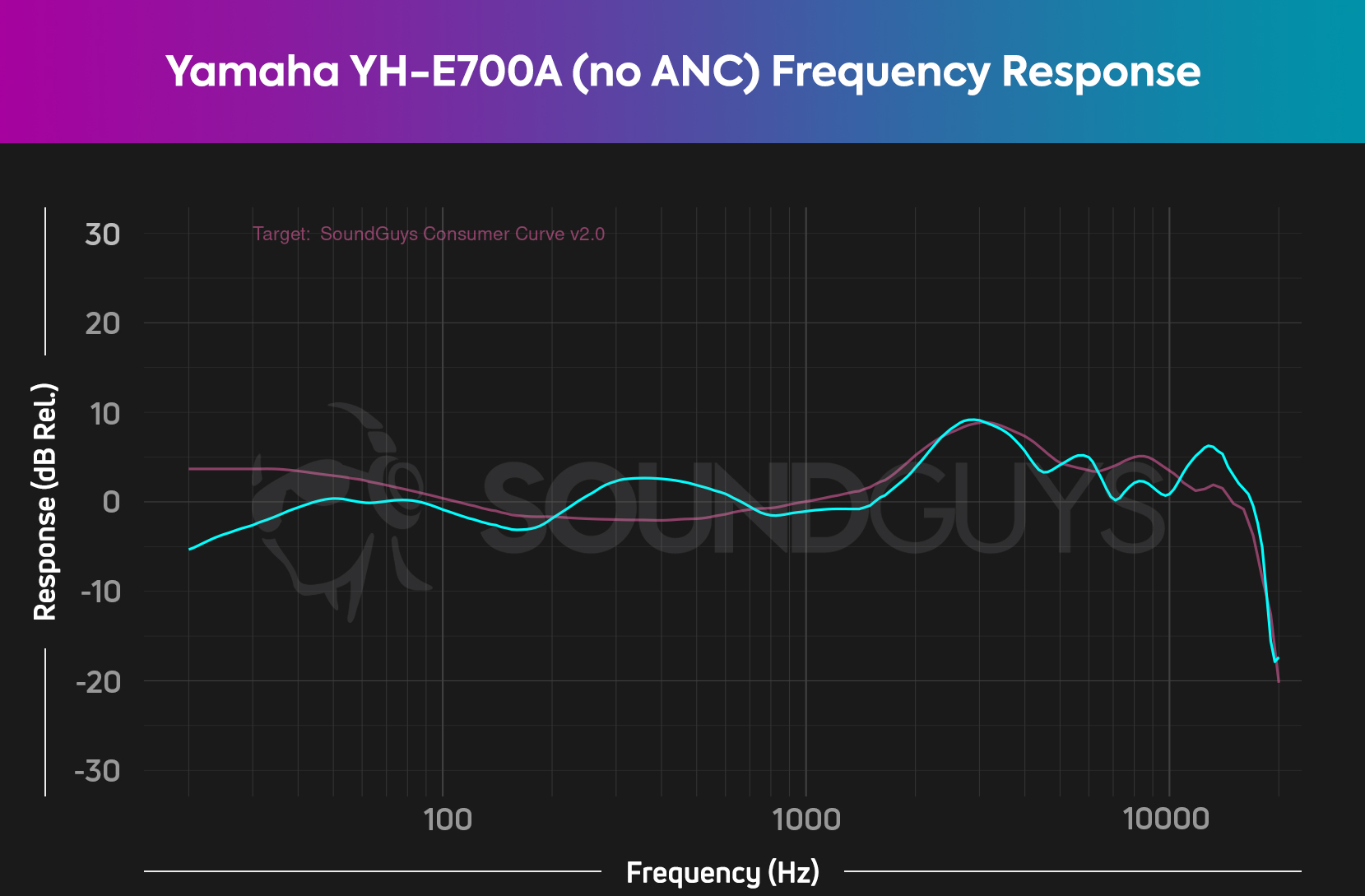
Considering most listeners buy a noise canceling headset for its ANC properties, the ANC frequency response chart is the one used for sound quality scores in this review. With ANC off, sub-bass is reduced and the volume dip between 100Hz and 400Hz found in the ANC frequency response disappears. Instead, you get a volume bump between 200Hz and 700Hz.
The YH-E700A measures pretty close to our ideal in the high range, though when this gets paired with an exaggerated low end (like in ANC mode) it leads to a slightly quiet high end by comparison. The representation in the high end itself sounds basically good.
Don’t get it twisted, the YH-E700A sounds pretty decent generally when you turn off Optimizers and ANC (although it’s okay like that too, even if the dip at 100Hz to 400Hz makes it harder to hear fundamentals). We flag this instance because on principle most people shouldn’t pay a premium for ANC when it’s barely there at all. An ANC mode effectively cranking the very frequencies of your music that ANC is supposed to filter out oversells the capabilities of the YH-E700A. If you sit in silence with the YH-E700A on in ANC mode, it’s not going to cancel your environment much in the low frequencies where it should.
When listening to music the headset scarcely cuts the noise rather, it masks noise, which you can do with any old headset and more volume.
It seems deliberate to offer very little in the way of actual active noise cancellation, and then alter the frequency response to make consumers think it does something more in order to justify a higher price.
Lows, mids, and highs
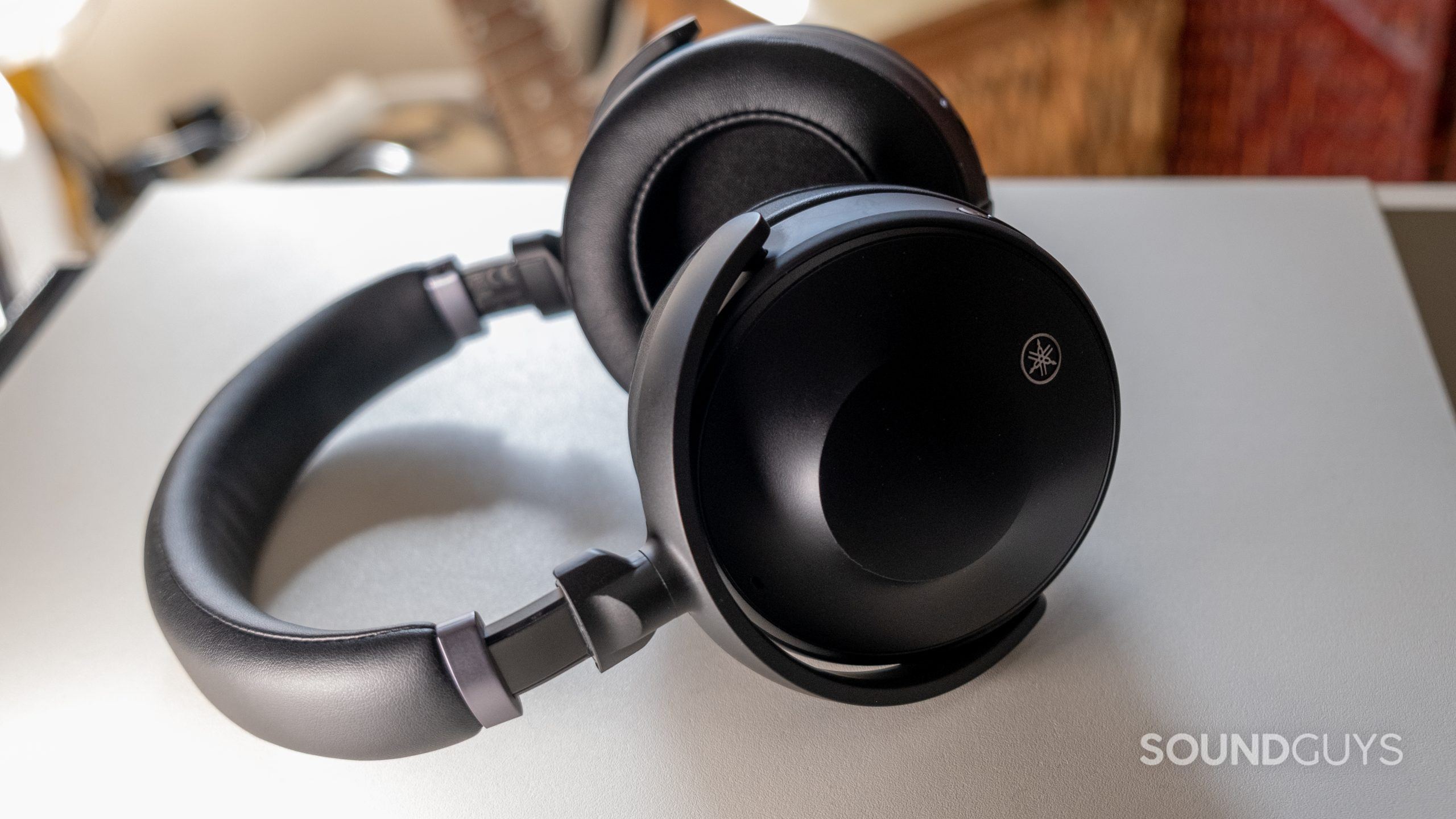
Listening to Darker Place – Joe Goddard Remix, Radio Edit by Rachel Chinouriri with ANC on the good amount of sub-bass emphasis works well with the inherent deep oomph of the song. Interestingly, switching to noise canceling off yields even more oomph because the dip between 100Hz and 400Hz is replaced by the bump at 200Hz and 700Hz. Here the initial attack of kick drums and bass has more volume filling out the song better.
Chinouriri’s whisper-like vocals come through more or less the same in both modes. The deeper backing vocals, however, decrease in volume in the chorus with ANC on. Neither mode suits the song especially well. ANC mode carves out 100Hz to 400Hz in volume and it’s noticeable, while no mode turns up 200Hz to 700Hz a bit too loudly. It’s not awful, and the reproduction in the highs is quite pleasant with the slight under-emphasis (relative to our ideal) meaning you don’t get piercing treble.
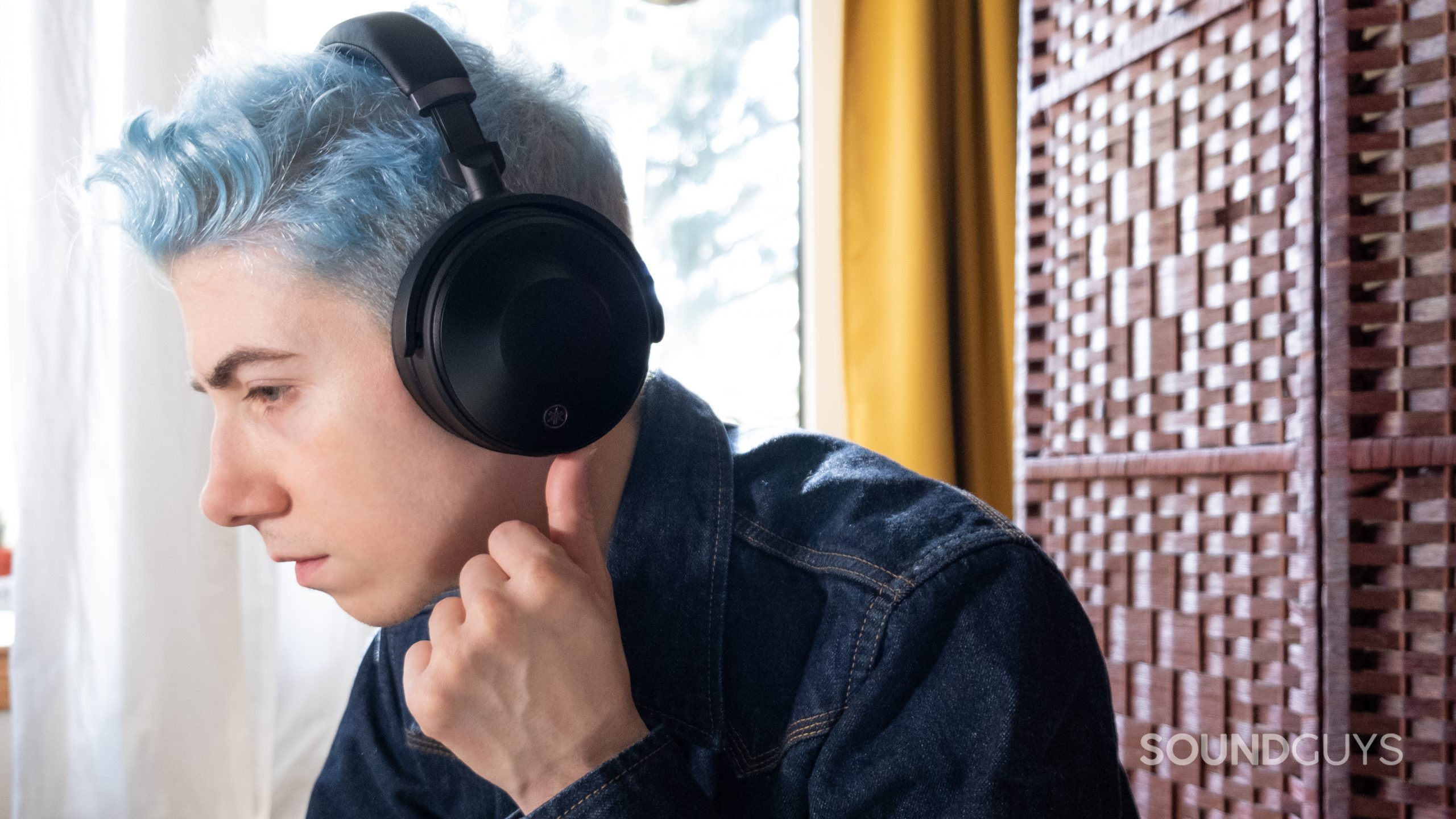
Toggling the “Listening Care” setting on and off in the app introduces way too much sub-bass, regardless of ANC or standard listening mode. If the goal of Listening Care is to prompt listeners to keep the headset at a safe volume, it works by turning up the bass way too much. This will make you want to turn it down globally.
How good is the microphone on the Yamaha YH-E700A?
The microphone on the Yamaha YH-E700A is okay. It reproduces voices, particularly deeper voices relatively well. Where the mic falters is with having very little noise filtering. As a result, environmental noise will still get transmitted by the headset.
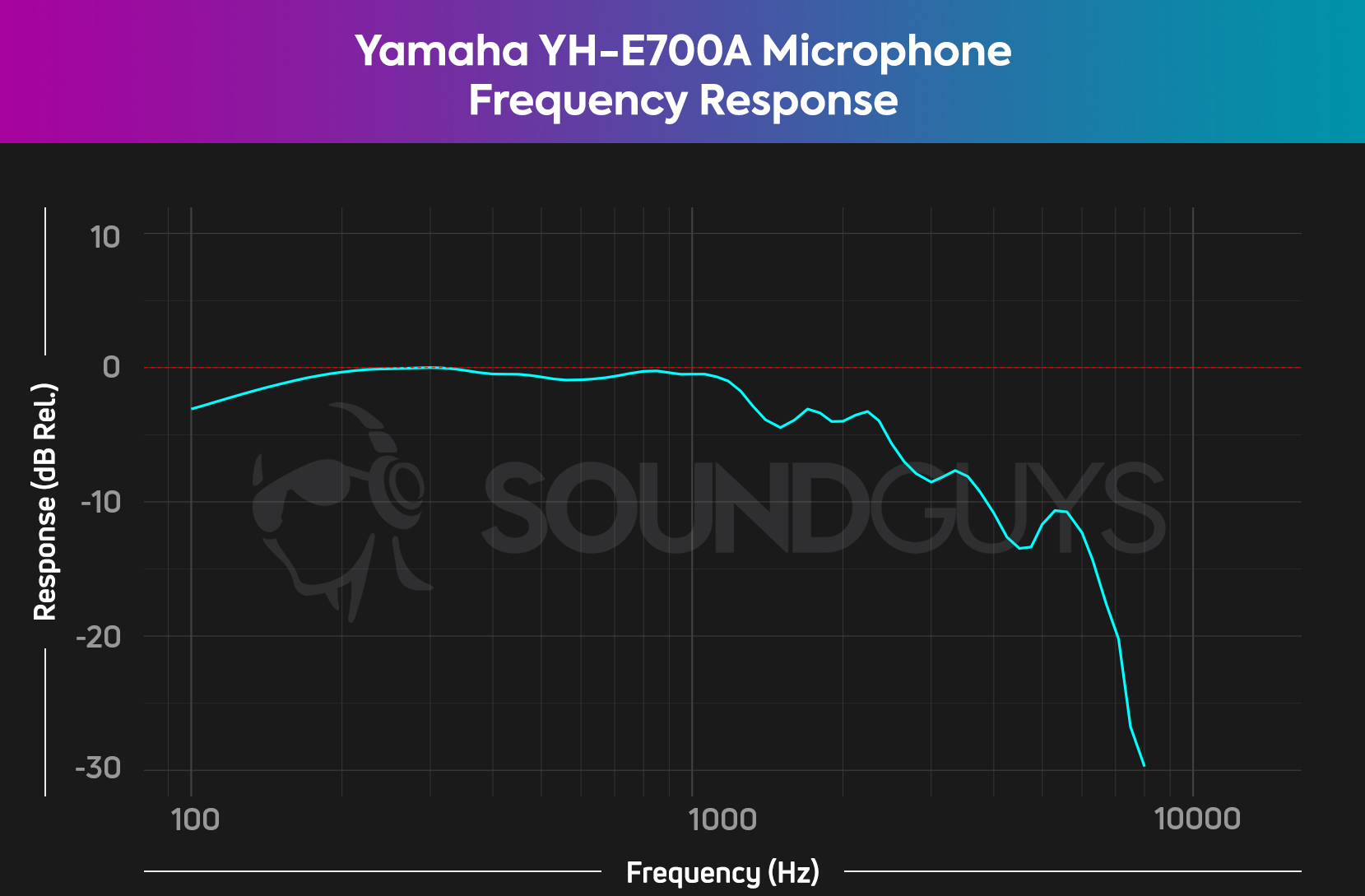
Even so, in reverberant spaces, it performs well at transmitting the sounds spoken even if it still picks up the reverberation. In the office, the mic picks up everything from keystrokes to background music. Street noise is a mixed bag: it captures the noise, but your voice remains mostly intelligible. Some headsets go too far in the noise rejection direction and end up cutting out your voice too. You don’t have to worry about that here.
Let us know what you think in the poll down below.
Yamaha YH-E700A microphone demo (Reverb):
Yamaha YH-E700A microphone demo (Office):
Yamaha YH-E700A microphone demo (Street):
How does the microphone sound to you?
Should you buy the Yamaha YH-E700A?
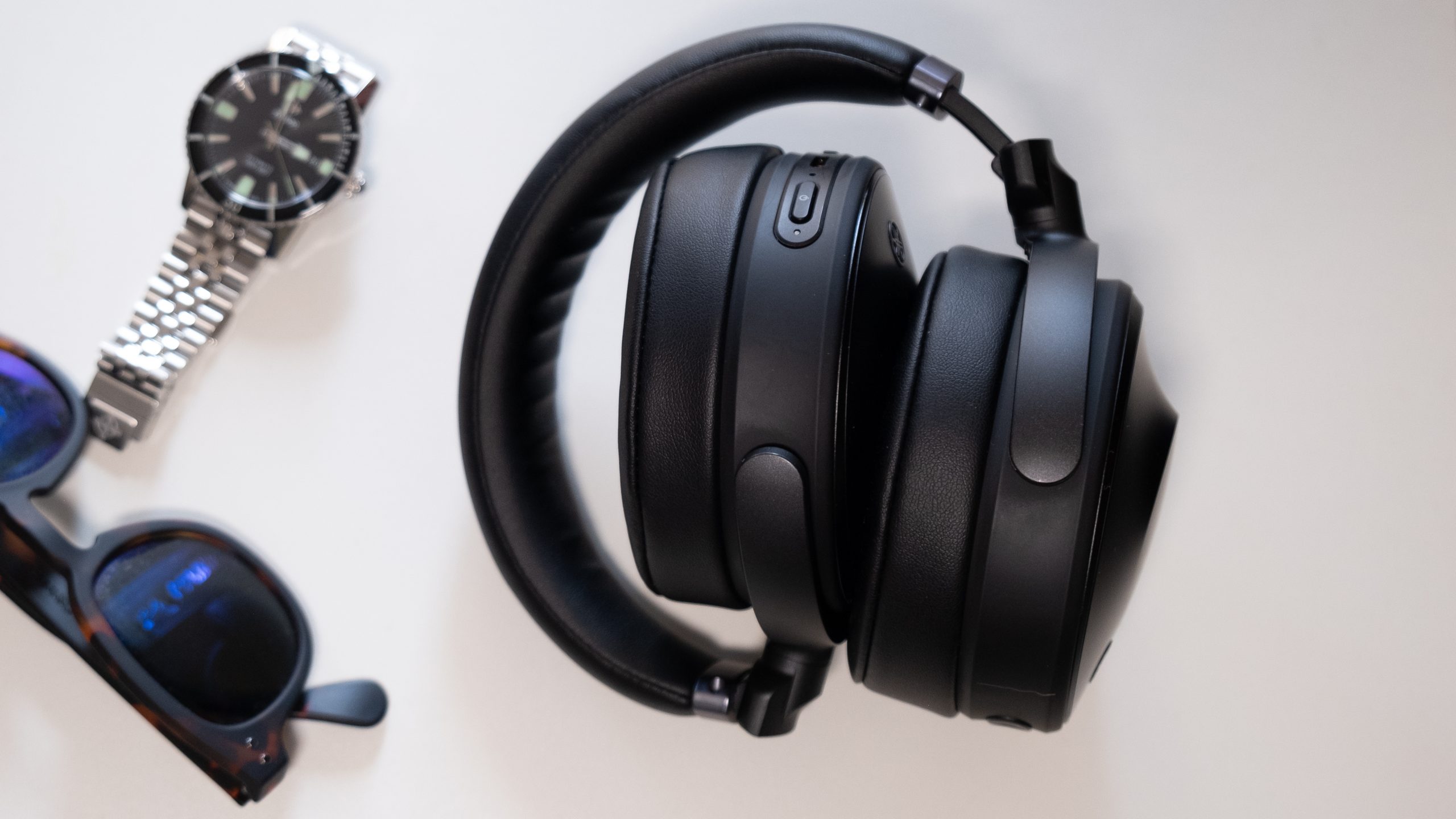
The YH-E700A has some quirks, but for those who enjoy a reasonably comfortable headset with some bassy options and a pretty decent treble frequency response, it could be a winner. The unusual, and welcomed, inclusion of aptX Adaptive favorably rounds out the package for Android users.
Given that it often sells for quite a bit less than its MSRP, it’s a pretty good choice on sale, so long as you temper expectations. While the ANC is pretty useless, the isolation is okay. One significant quibble with the YH-E700A is the alteration to the frequency response when ANC is on versus off.
Just because you want to cancel noise, doesn't mean you also want to change your music from 700Hz and below.
Meanwhile, the Listening Optimizer and Listening Care modes could be replaced with something more useful like an equalizer, especially considering the lack of control users have over the frequency response that changes with ANC. On the other hand, it generally sounds alright in standard mode and once you master quirks like pairing and learning to turn off most functions, it’s a decent headset. Just pretend it doesn’t come with ANC.

What are some alternatives to the Yamaha YH-E700A?
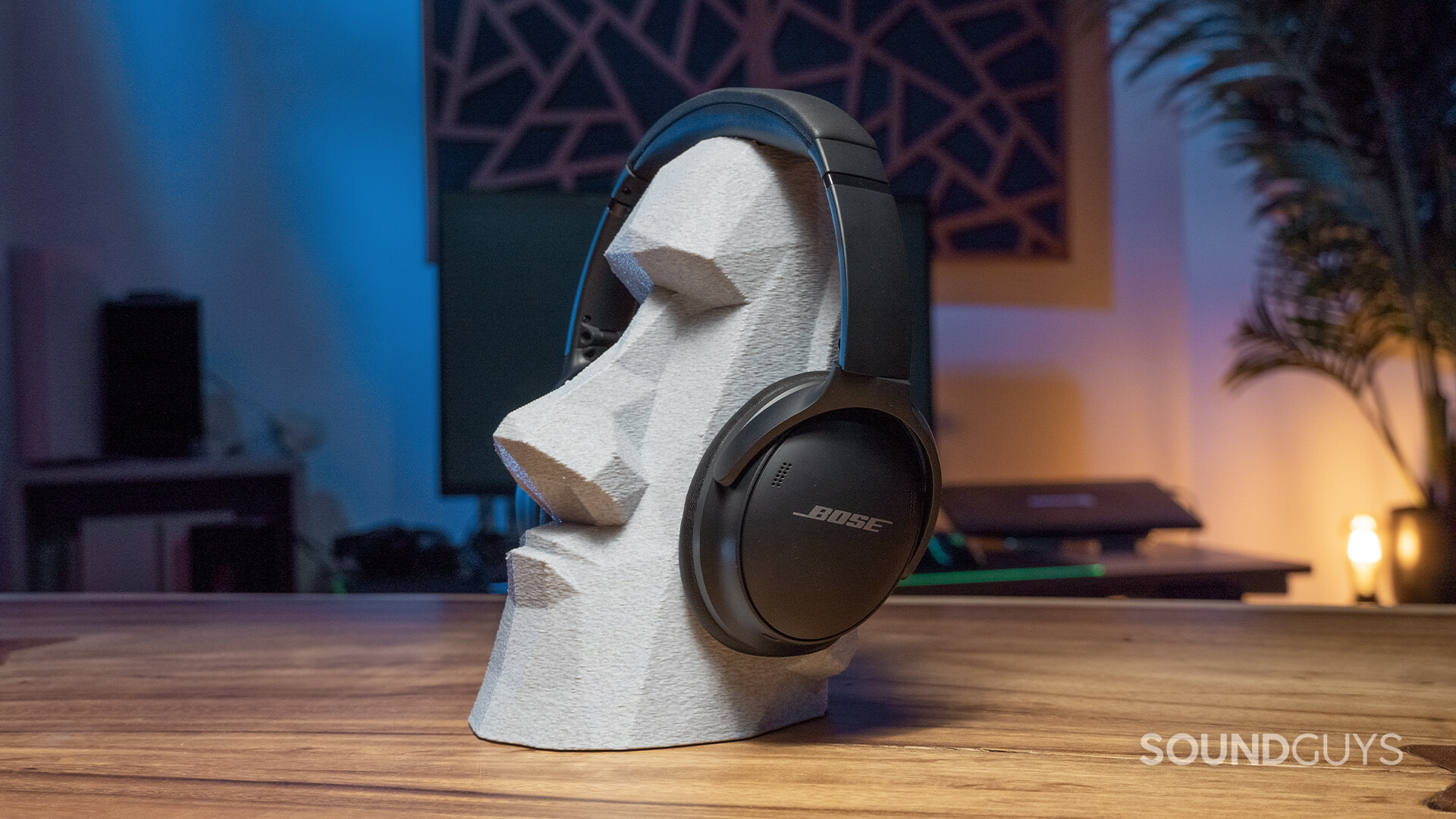
For a more predictable and far better noise canceling experience, pick up the Bose QuietComfort 45. With the updated Bose Muse app you can adjust the EQ so the sound more closely follows our house curve. For Apple users, it’ll perform about the same using AAC codec, while the lack of aptX means Android users have to make do with possibly worse latency than the YH-E700A. On the other hand, the ANC blows the YH-E700A away.
Android users seeking to use aptX and ANC can still pick up the Sony WH-1000XM3 at a discount, now that the WH-1000XM4 is out. While the Sony WH-1000XM4 is a great choice as well, it ditched the aptX codec sticking with LDAC, and has better noise canceling at a price.
For a more wallet-friendly alternative, consider the Sennheiser PXC 550-II. It punches above its price tag with aptX and aptX Low Latency to suit Android users. While ANC has been surpassed by newer headsets, it still silences more low-end than the Yamaha YH-E700A.
Frequently asked questions about the Yamaha YH-E700A
No, you’ll need to get the model above, Yamaha YH-L700A to get surround sound if you really want to stick to Yamaha. Otherwise, Apple AirPods Max and Sony WH-1000XM4 sport surround sound (in specific circumstances). Increasingly, streaming services like Amazon Music HD have added their own versions of 3D audio that work with most headphones.